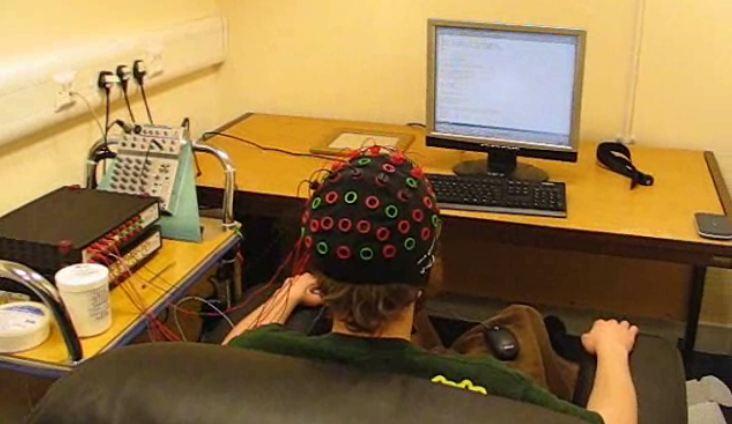Mind-meld brain power is best for steering spaceships
February 4, 2013

BCI system (credit: University of Essex)
Researchers are discovering that they get better results in some tasks by combining the signals from multiple brain-computer interface (BCI) users.
Until now, this “collaborative BCI” technique has been used in simple pattern-recognition tasks, but a team at the University of Essex in the UK wanted to test it more rigorously, New Scientist reports.
So they developed a simulator in which pairs of BCI users had to steer a craft towards the dead center of a planet by thinking about one of eight directions that they could fly in, like using compass points. Brain signals representing the users’ chosen direction, as interpreted by the machine-learning system, were merged in real time and the spacecraft followed that path.
The results, to be presented at an Intelligent User Interfaces conference in California in March, strongly favored two-brain navigation.
The technique can also compensate for a lapse in attention.
One day groups of people hooked up to brain-computer interfaces (BCIs) might work together to control complex robotic and telepresence systems, maybe even in space. NASA’s Jet Propulsion Lab in Pasadena, California, has been observing the work while itself investigating BCI’s potential for controlling planetary rovers, for example.
(Insert back-seat-driver joke here. — Editor)